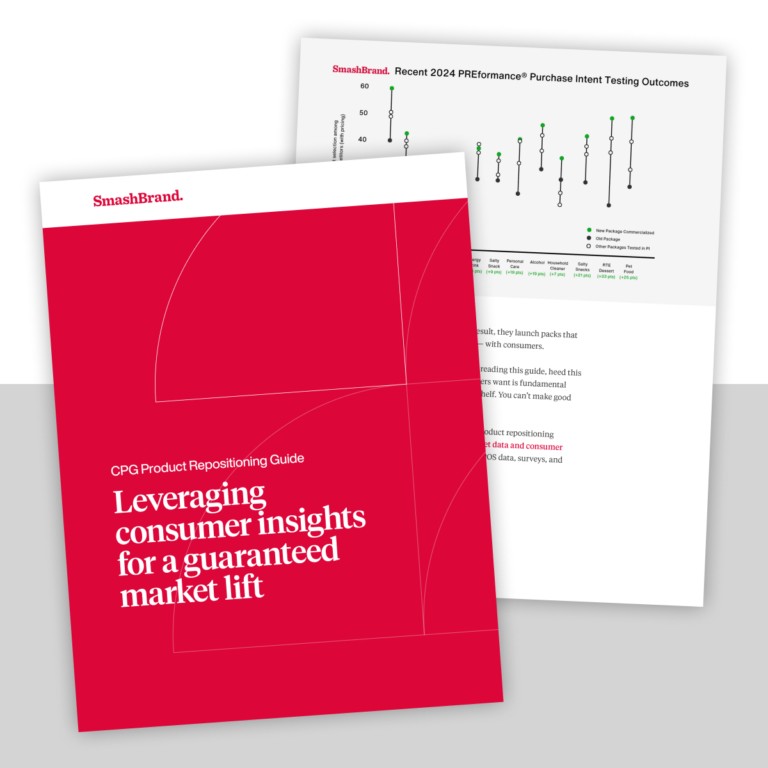So what makes one packaging designer stand out over another one? Good question: some stand out because of their glorious pectoral muscles, radiant skin, and impeccable wardrobe…
Wait, sorry.. that’s just us. [Oh, snap!] For the rest of the crowd, they can design packaging that protects the product, elevates the product’s sales, uses as few materials as possible and wins prestigious package design awards. Of course, to potential clients, the most important quality a packaging designer can have is the talent for making those clients money. In order to make those clients money, the package you design has to have several distinct qualities.
Shelf Appeal
If you’re competing with a juggernaut brand whose consumer base has displayed an almost unflagging loyalty for the past, say, half century, your package has to be made distinct to disturb the typical customer’s ingrained 30-second grocery/drugstore shelf scanning process. Unique color combinations, bold and unusual typography and an eye-pleasing yet distinct shape are three tools packaging designers use to enhance a product’s charm factor.
Studying competitive products is essential. Remember, shelf distinction doesn’t necessarily mean visually loud; if your competitors all use a heavy design hand in graphics and package features, a clean and simple package design will stand apart easily.
Don’t forget; the stores that will stock your product aren’t entirely infallible regarding product displays. If you have a frozen food item, the freezer case might likely frost over, making the contents difficult to see. Crucial label details could be obscured if the retailer tends to hang discount tags off the shelves rather than sliding them in the shelf ridge. The stellar package designer will consider those things in the concept phase. One technique we particularly like for product distinction is using typography that can be read without necessarily picking up the product first. Products that can’t be identified during a cursory shelf glance are products that are going to be largely ignored.
User Appeal
What can a package designer do to enhance user experience? Depending upon what is known as the “purchase driver,” the brand has quite a few options. If convenience is one of the main drivers for your food item, you might want to think about a design that allows the buyer to use the item in several ways and in different environments. For example, if your product is a shampoo targeted towards athletes, think about a design that would make it easier for the customer to carry the product in a gym bag, use in a gym shower or defend himself in a gym riot.
Heinz recently unveiled a condiment packet that allows the user to either squeeze the ketchup from the container or remove the film so the user can dip whatever foods he/she likes into the ketchup. It was a relatively small adjustment, but it delivers a noticeable user appeal.
Material Economy
Regarding packaging materials, less is more – from both a cost standpoint and an environmental standpoint. The cost of production will factor into the cost of the product. Unless the extra packaging provides a distinct user advantage (i.e., the package becomes a part of the product itself), the flashiness of the packaging might only hurt sales.
Excessive packaging also leaves a bad taste in many consumers’ mouths. If the product is marketed toward people interested in personal and ecological health, a surplus of packaging might offend the people you are trying to entice.
So, what have we learned today? We learned that effective packaging designers have an almost supernatural ability to hypnotize the shopper away from trusted brands in 30 seconds or less. We learned that Heinz dip and squeeze containers were a stroke of genius. Most importantly, we learned that supermarkets must be watched and studied, lest they body-slam a perfectly good package design merely by stocking it.
Data-Driven Brand Development
Want a best-selling brand? SmashBrand is a brand development agency for FMCG and CPG companies. From brand strategy to packaging design testing, our Path To Performance™ process guarantees a retail performance lift. Book a time to discuss your project with our team.
Subscribe to
Nice Package.
A monthly newsletter that unpacks a critical topic in the FMCG & CPG industry.
Free Resource.

CPG product repositioning guide.
Explore the five undeniable signs your CPG product needs repositioning along with strategies for leveraging consumer insights for a guaranteed market lift.
Learn More About CPG product repositioning guide.